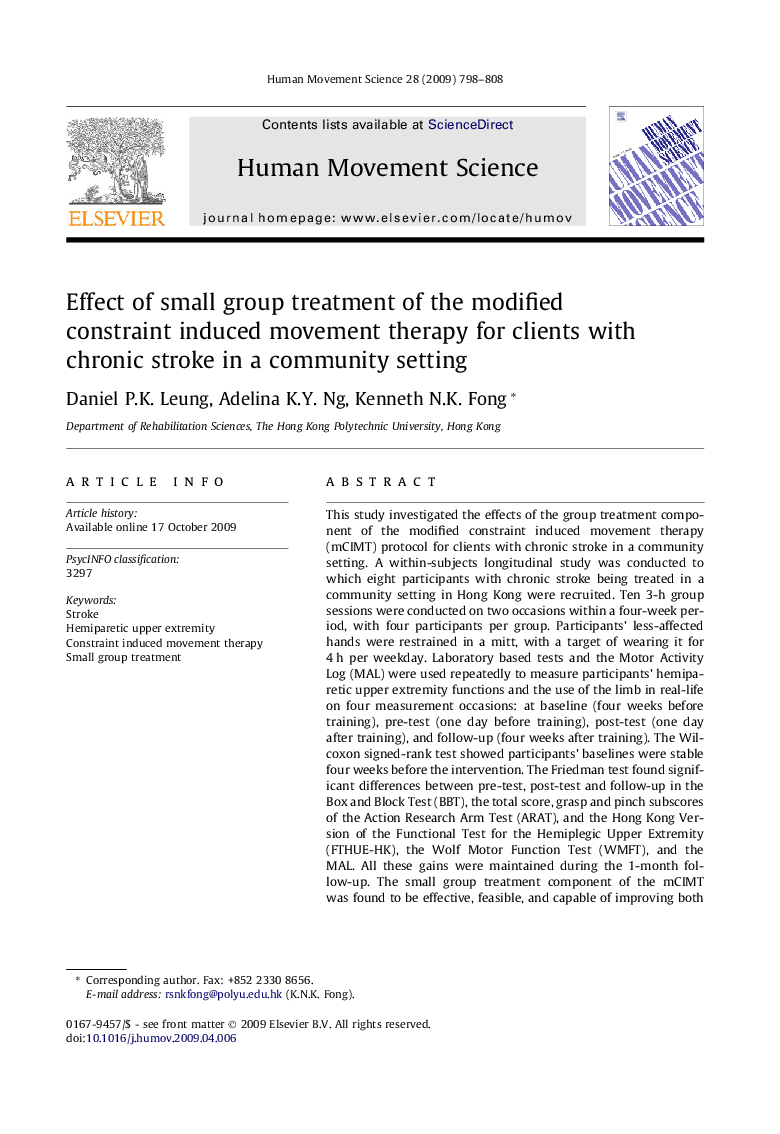| Article ID | Journal | Published Year | Pages | File Type |
|---|---|---|---|---|
| 928759 | Human Movement Science | 2009 | 11 Pages |
This study investigated the effects of the group treatment component of the modified constraint induced movement therapy (mCIMT) protocol for clients with chronic stroke in a community setting. A within-subjects longitudinal study was conducted to which eight participants with chronic stroke being treated in a community setting in Hong Kong were recruited. Ten 3-h group sessions were conducted on two occasions within a four-week period, with four participants per group. Participants’ less-affected hands were restrained in a mitt, with a target of wearing it for 4 h per weekday. Laboratory based tests and the Motor Activity Log (MAL) were used repeatedly to measure participants’ hemiparetic upper extremity functions and the use of the limb in real-life on four measurement occasions: at baseline (four weeks before training), pre-test (one day before training), post-test (one day after training), and follow-up (four weeks after training). The Wilcoxon signed-rank test showed participants’ baselines were stable four weeks before the intervention. The Friedman test found significant differences between pre-test, post-test and follow-up in the Box and Block Test (BBT), the total score, grasp and pinch subscores of the Action Research Arm Test (ARAT), and the Hong Kong Version of the Functional Test for the Hemiplegic Upper Extremity (FTHUE-HK), the Wolf Motor Function Test (WMFT), and the MAL. All these gains were maintained during the 1-month follow-up. The small group treatment component of the mCIMT was found to be effective, feasible, and capable of improving both motor performance and functional use of the affected upper extremity for patients with chronic stroke in a community setting.
